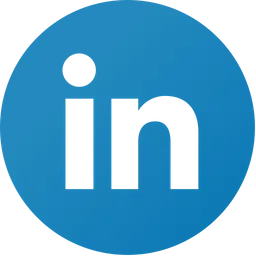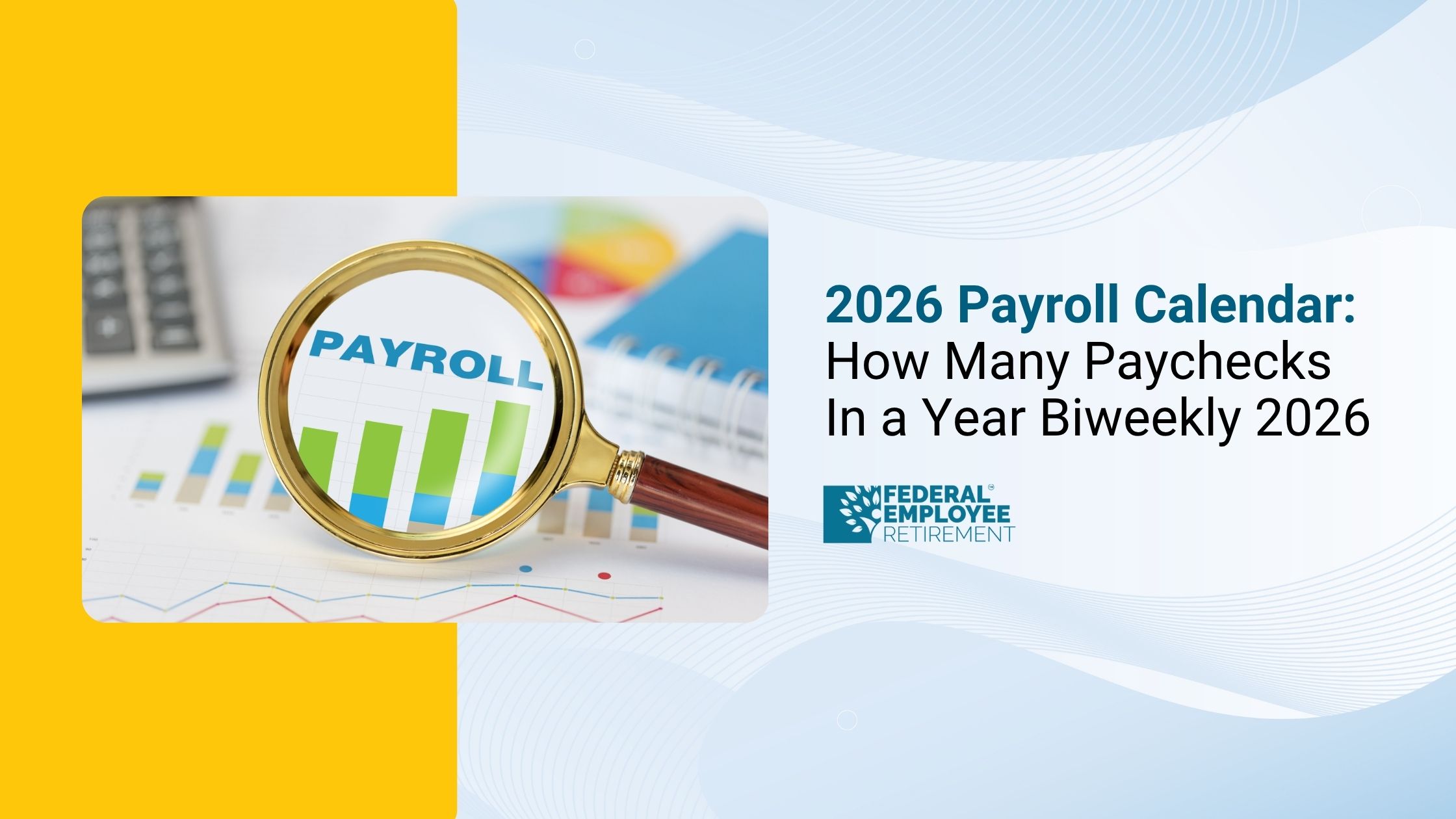You’re not alone; 4,359 federal employees booked their free review.
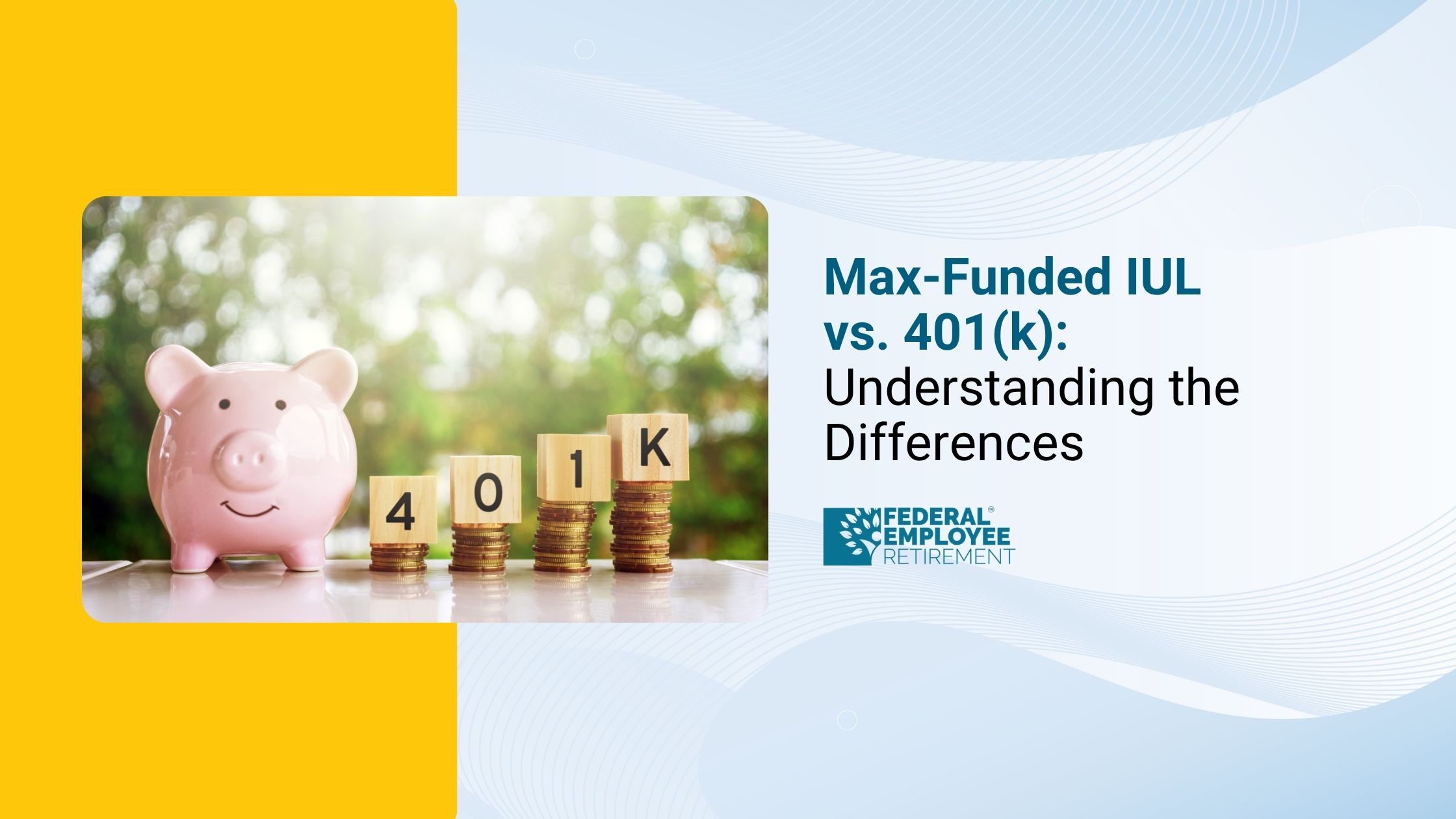
Indexed Universal Life vs. 401(k)
When building a long-term retirement strategy, you have several tools at your disposal. A workplace 401(k) is one of the most common options, allowing you to invest for retirement on a tax-advantaged basis. An indexed universal life insurance policy (IUL) is another tool that provides permanent life insurance coverage while offering the potential to accumulate cash value. Both can play a role in helping you reach your financial goals, but they work very differently.
This guide explains how each option functions, how they compare and when it may make sense to use one or both in your retirement strategy.
What Is an Indexed Universal Life Insurance (IUL) Policy?
Indexed universal life insurance is a type of permanent life insurance. As long as the required premiums are paid, the policy remains in force for your entire lifetime. When you pass away, the insurer pays your beneficiaries an income-tax-free death benefit.
How Cash Value Works
An IUL includes a cash value component. A portion of your premium goes toward insurance costs, while the remainder is allocated to a cash-value account. This account earns interest based on the performance of a market index such as:
- The S&P 500
- The Nasdaq
- Other commonly tracked equity indices
It’s important to understand that the cash value is not directly invested in the market. Instead, the insurer credits interest based on index movements.
Caps, Floors and Participation Rates
Three key features regulate IUL growth:
- Floor: Protects cash value from negative returns, typically 0%.
- Cap: Limits the maximum credited return, sometimes around 3%–10% depending on the insurer.
- Participation rate: Determines how much of the index’s return you receive (for example, 80% of the index’s gain).
This structure places IULs between fixed universal life (with guaranteed returns) and variable universal life (which invests directly in securities).
Tax Treatment and Loans
Cash value in an IUL grows tax-deferred. You can access it through policy loans, which are generally tax-free if the policy remains in force and doesn’t become overfunded. However:
- Any outstanding loans reduce the death benefit.
- If the policy lapses with unpaid loans, the IRS may treat the balance as taxable income.
Policy loans must be managed carefully to avoid these risks.
Also read - 401a vs 401k vs 403b
What Is a 401(k)?
A 401(k) is a tax-advantaged, employer-sponsored retirement plan. It allows you to save and invest directly from your paycheck through an elective salary deferral. Many employers also provide matching contributions, which can significantly boost your long-term savings.
Contribution Rules for 2025
- Employee contribution limit: $23,500
- Standard catch-up (age 50+): $7,500
- New “super catch-up” for ages 60–63 (starting 2025): $11,250
Both employee and employer contributions grow tax-deferred.
Traditional vs. Roth 401(k)
- Traditional 401(k): Contributions reduce taxable income; withdrawals in retirement are taxed as ordinary income.
- Roth 401(k): Funded with after-tax dollars; qualified withdrawals are tax-free.
Investment Choices
401(k) plans typically offer a selection of:
- Index funds
- Target-date funds
- Actively managed mutual funds
- Bond funds and other securities
Your returns depend on the performance of the investments you select. Unlike an IUL, there is no cap on how much your investments can grow.
Withdrawals and Penalties
Withdrawals before age 59½ generally incur a 10% penalty, although the IRS allows exceptions for:
- Qualified medical expenses above 7.5% of AGI
- Birth or adoption (up to $5,000 per parent)
- Higher education expenses
- First-time home purchases (up to $10,000)
- Health insurance premiums during unemployment
- Disaster-related expenses
- Personal emergencies (up to $10,000)
The Rule of 55 allows penalty-free withdrawals if you leave your job in the year you turn 55 or later.
Required Minimum Distributions (RMDs)
Traditional 401(k)s require minimum distributions starting at:
- Age 73 for most individuals
- Age 75 if born in 1960 or later
Not taking the full RMD triggers a penalty of:
- 25% of the amount not withdrawn
- Reduced to 10% if corrected within two years
RMDs are based on your account balance as of December 31 of the prior year.
Comparing IUL and 401(k) for Retirement Savings
Both an indexed universal life insurance policy and a 401(k) can help you accumulate money for the future, but they serve distinct purposes.
Returns and Market Exposure
- IUL: Returns depend on index performance but are capped. A strong index year may be credited at only 3–10% due to policy limits.
- 401(k): Offers full participation in market upside (and downside). If an index fund gains 20%, your 401(k) reflects that growth.
Costs
- IUL: Includes administrative fees, mortality charges and potential surrender penalties. Costs are higher and more complex.
- 401(k): Generally lower, more transparent fees.
Employer Match
A 401(k) often includes an employer-matching contribution, which is essentially free money.
An IUL does not include any matching funds.
Access to Funds
- IUL: Loans can be taken at any age if the policy is funded.
- 401(k): Early access is restricted, with penalties unless exceptions apply.
Life Insurance
- IUL: Includes a built-in death benefit.
- 401(k): No death benefit; inherited balances are taxable to beneficiaries.
Tax Treatment and Withdrawals
IUL
- Tax-deferred cash value growth
- Tax-free loans if the policy stays in force
- No RMDs
- Tax-free death benefit
401(k)
- Pre-tax contributions lower taxable income
- Withdrawals are taxed in retirement (Traditional)
- Early withdrawals may incur penalties
- RMDs required starting at age 73
- Beneficiaries pay taxes on inherited balances
Your long-term tax planning may benefit from having both taxable and non-taxable sources of income during retirement.
When to Consider an IUL as a Supplement to a 401(k)
Although a 401(k) is often the foundation of a retirement plan, an IUL can serve as a useful complement in certain situations.
1. You’ve Maxed Out 401(k) and IRA Contributions
If you have additional money to save after using all available tax-advantaged retirement accounts, an IUL can provide another vehicle for tax-deferred growth.
2. You Want to Diversify Tax Buckets
A 401(k) generates taxable income in retirement. IUL loans, when managed correctly, are generally tax-free. Combining both may help you manage tax brackets more efficiently.
3. You Need Earlier Access to Funds
IUL loans do not have age restrictions, which can be helpful if you plan to retire early or want more flexible access to cash.
4. You Want a Built-in Death Benefit
IULs provide permanent life insurance coverage, which may be valuable for estate planning or providing liquidity to beneficiaries.
5. You Want to Avoid RMDs
An IUL has no required minimum distributions, offering more control over when and how you access the money.
Potential Drawbacks of an IUL
Before choosing an IUL, it’s important to consider the limitations:
- Higher costs than traditional retirement accounts
- Returns limited by caps and participation rates
- Loans, if mismanaged, can cause a policy lapse
- Surrender charges may apply in early years
- Policy requires consistent long-term funding
For these reasons, most people view IULs as a supplement, not a replacement, for a 401(k).
Planning for retirement doesn’t have to be overwhelming. Whether you’re comparing an IUL to a 401(k) or trying to understand how both fit into your long-term goals, speaking with a financial advisor can help you evaluate your options clearly and objectively.
If you’re ready to take the next step, consider using a tool that matches you with vetted, fiduciary financial advisors who serve your area. You can review their profiles, schedule a quick introductory call and decide who you feel most comfortable working with. It only takes a few minutes to get started.
Related Tags -
what happens to my 401k if i die
personal loan vs 401k loan
Bottom Line
A 401(k) and an indexed universal life policy can both help you build wealth for retirement, but they serve different purposes. A 401(k) is usually the first place to save because of employer matching, tax benefits and long-term growth potential. An IUL may be appropriate as an additional tool especially if you need permanent life insurance, want more tax flexibility or have already maxed out your retirement accounts.
Retirement Planning Tips
- Consider using a retirement calculator to estimate future income needs.
- Review your insurance and estate planning needs regularly.
- Talk to a financial advisor if you’re unsure how to integrate life insurance into your retirement strategy.
- Understand RMD rules and how they may affect your taxable income in retirement.
Desclimer
This article is for informational and educational purposes only. It is not intended to provide financial, tax, investment or insurance advice. Indexed universal life insurance (IUL) policies involve costs, limitations and risks, including mortality charges, administrative fees, surrender charges and the potential for policy lapse if premiums are not maintained. Policy loans reduce both the cash value and death benefit, and may create taxable income if the policy terminates or becomes a modified endowment contract (MEC).
401(k) plans are subject to IRS rules regarding contributions, withdrawals, penalties and required minimum distributions (RMDs). Tax laws and contribution limits can change, and individual tax situations vary. Early withdrawals from retirement accounts may be subject to penalties unless an IRS exception applies.
You should consult with a qualified financial advisor, licensed insurance professional or tax professional before making decisions regarding retirement accounts, life insurance strategies or tax planning. Any examples provided are hypothetical and for illustrative purposes only.
Content References
- SmartAsset – Retirement and Insurance Guides
- NerdWallet – Personal Finance and Investing Resources
- Investopedia – Insurance and Retirement Strategy Articles
- Bankrate – Retirement Planning and Investment Education
- IRS – Retirement Account Rules, Contribution Limits and RMD Regulations
- FINRA – Investor Information on Market Risk and Retirement Accounts
- SEC Investor Education – Overview of Investment and Insurance Products
- NAIC – Consumer Guides on Life Insurance and Policy Structures
- CFP Board – General Financial Planning Standards and Best Practices


Get Updated
Subscribe to our weekly updates for the latest on retirement planning, federal benefits, exclusive webinars, and more!
Download Federal Retirement: Step-by-step Checklist
This comprehensive guide will help you understand your federal benefits, optimize your savings, and plan for a comfortable future.

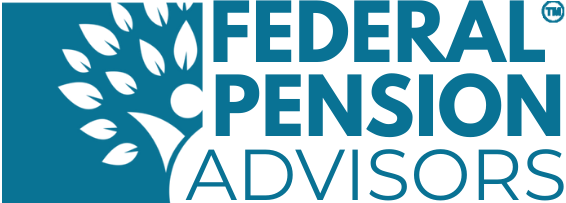
.png)



